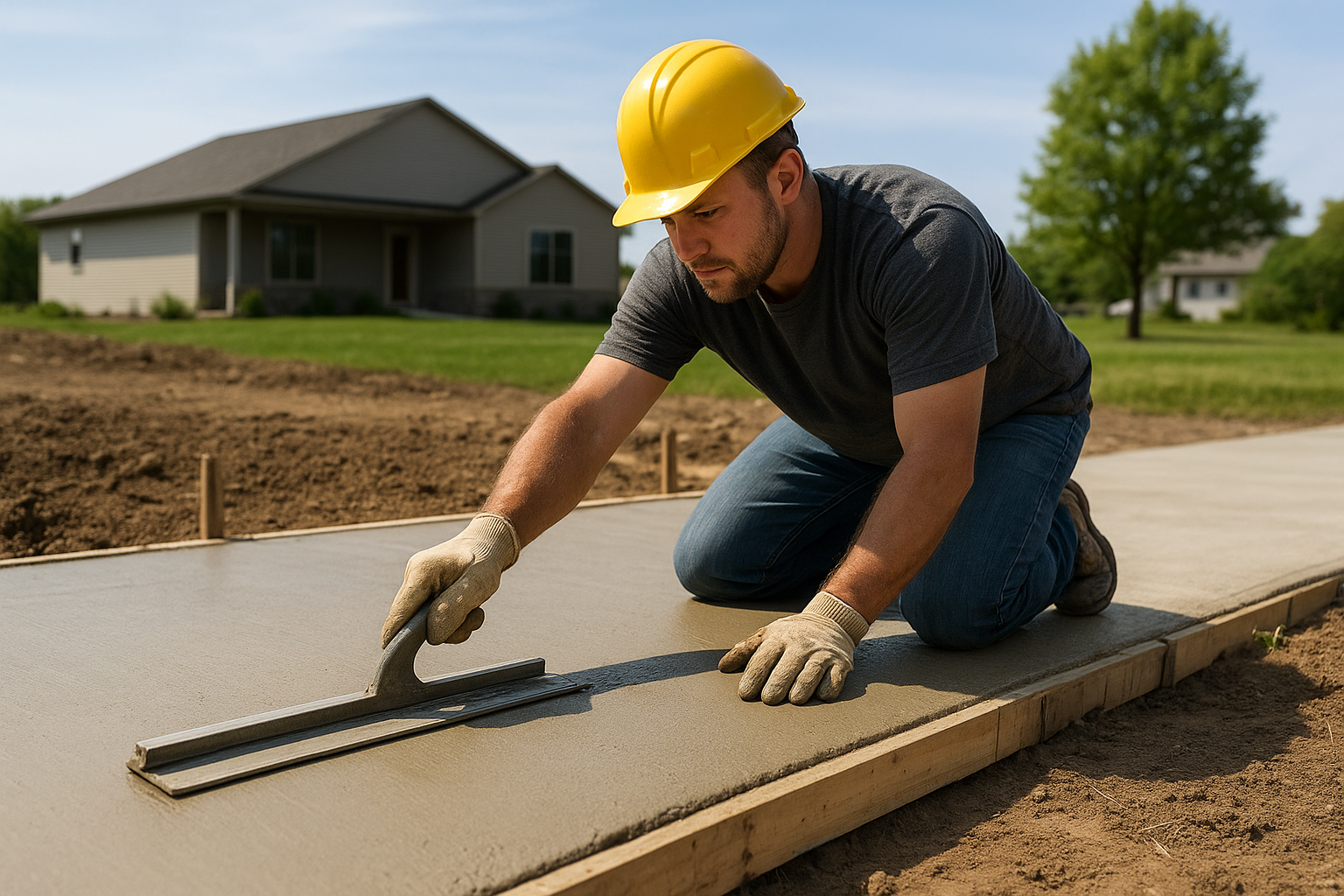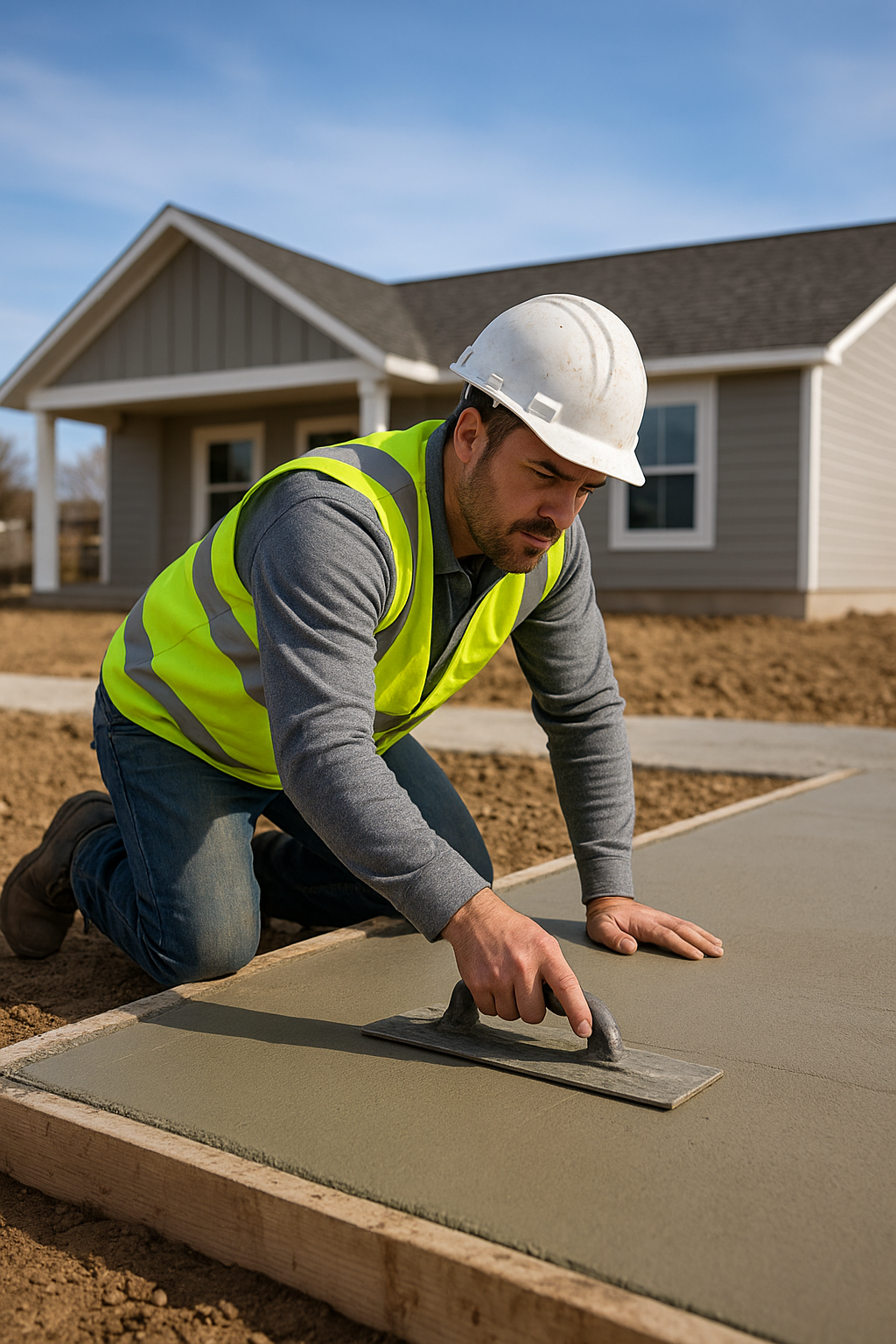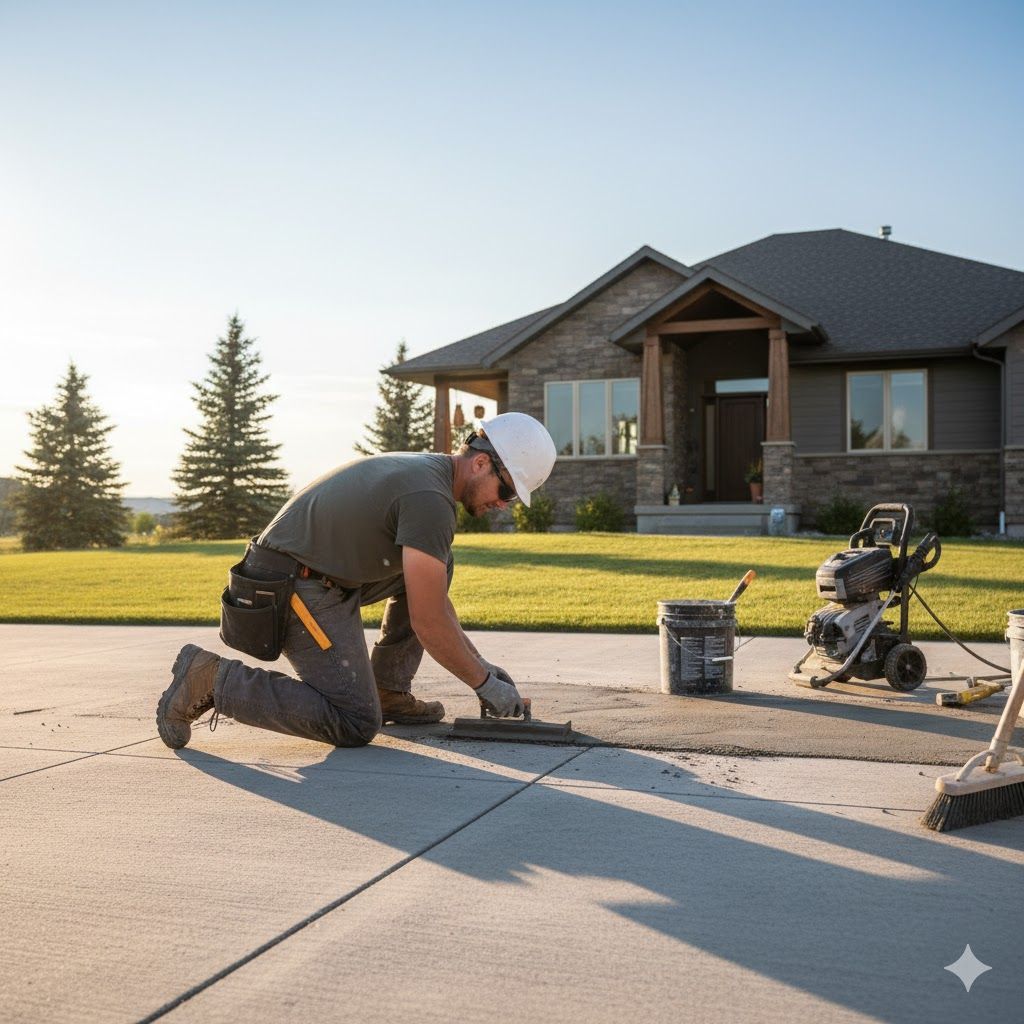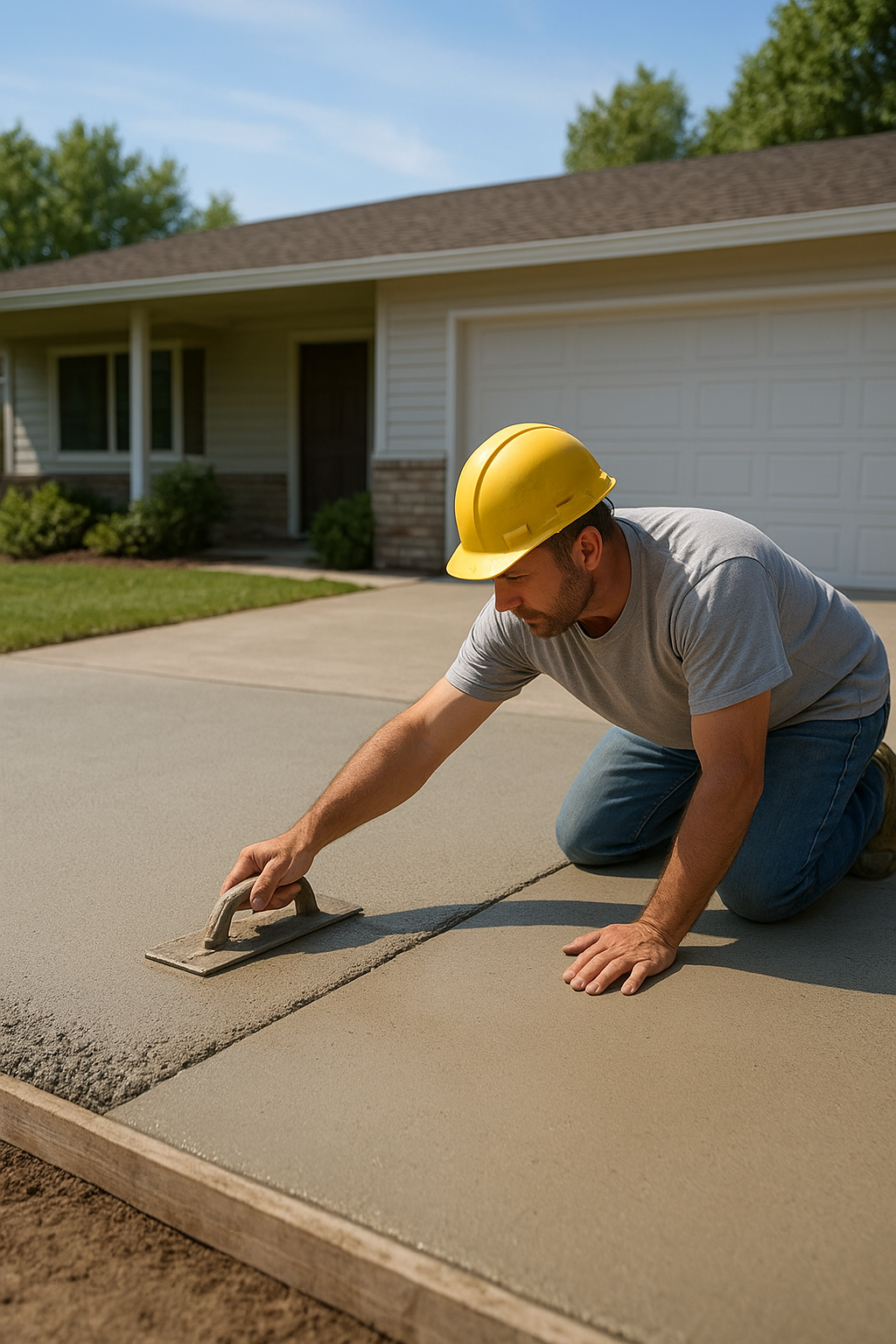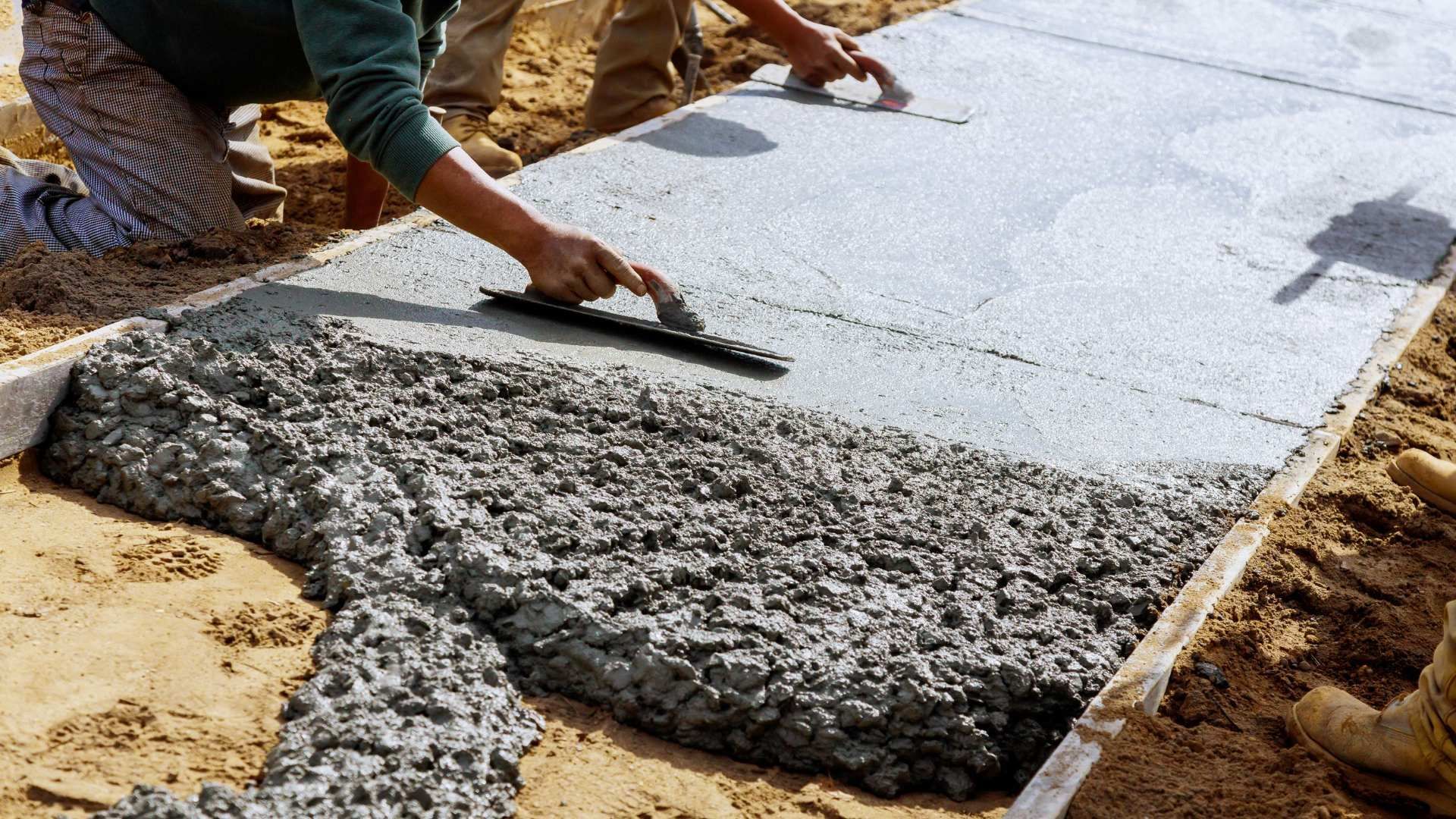The Step-by-Step Guide to Professional Concrete Resurfacing
A successful resurfacing project requires meticulous attention to detail and specialized materials. While DIY kits exist, the longevity of a resurfaced slab, especially in a challenging climate like Helena, depends on professional-grade preparation and application.
Step 1: In-Depth Inspection and Concrete Repair Preparation
The foundation of the new overlay is the old concrete. Before anything is applied, the existing slab must be repaired.
- Cleaning and Degreasing: The surface is aggressively cleaned using a power washer and industrial degreasers to remove oil, grease, paint, and dirt. Any contamination will prevent the new overlay from bonding properly.
- Crack and Spall Repair: Fine cracks and small chips are repaired with a polymer-modified mortar. Larger, structural cracks are often widened into a V-shape, filled with a flexible sealant, and then patched to ensure they do not "telegraph" or reflect through the new overlay.
Grinding: The surface is often mechanically ground or "profiled" to create a rough, porous texture, similar to medium-grit sandpaper. This maximizes the surface area and ensures a strong, long-lasting bond between the old concrete and the new overlay.
Step 2: Surface Cleaning and Profiling
Once the initial repairs are complete, the surface is meticulously prepared for the bonding agent.
- Acid Etching or Grinding: This step is crucial for achieving a Concrete Surface Profile (CSP) of at least 2 or 3, a measure of surface roughness. The goal is to remove the smooth, non-porous top layer (the laitance) and open up the concrete's pores.
- Bonding Agent Application: A specialized primer or bonding agent is applied to the prepared surface. This liquid acts as a super-adhesive, ensuring the polymer cement overlay permanently locks onto the existing slab.
Step 3: Application of the Polymer Cement Overlay
This is where the magic happens, and your new surface takes shape.
- Mixing the Overlay: The polymer cement overlay is mixed according to strict guidelines. These products use fine-grain aggregates and polymer resins (like acrylics or epoxies) that significantly enhance the material's strength, flexibility, and adhesion compared to standard concrete.
- Application: The mix is applied quickly, typically using a squeegee, trowel, or specialized sprayer. For heavily damaged surfaces, a thicker, self-leveling overlay is used. For decorative finishes, a thinner "micro-topping" or a spray-down texture is preferred.
- Texturing and Stamping: If the homeowner chooses a decorative finish, the overlay is troweled to the desired texture, or stamping mats are used to impress patterns that mimic stone or tile.
Step 4: Finishing and Sealing for Montana Weather
For a permanent, high-performance finish in Helena, the sealing process is non-negotiable.
- Curing Time: The overlay is allowed to cure for the time specified by the manufacturer, which can range from 24 to 72 hours depending on the material and weather conditions.
- Sealing: Once fully cured, one or more coats of a high-quality sealant (often a clear acrylic, epoxy, or urethane) are applied. This is the ultimate defense against the environmental factors that destroy concrete:
- Moisture Intrusion: Sealing blocks water from penetrating the surface, which is essential to prevent freeze-thaw cracking and damage.
- Chemical Attack: It protects the surface from road salt, de-icing chemicals, oils, and other common household spills.
- UV Damage: It prevents the new surface colors and pigments from fading under intense sunlight.
A properly sealed, high-quality concrete overlay is built to withstand the rigorous Montana seasons, providing a beautiful and durable surface for years to come.
Longevity and Maintenance: Making Your Investment Last
When homeowners ask about the lifespan of resurfaced concrete, they are often concerned about how it will perform compared to new concrete. While a brand-new slab can last 25-40 years, an expertly installed polymer cement overlay offers exceptional durability and a substantial lifespan.
With proper application and maintenance, a professional concrete resurfacing overlay can easily last
10 to 15 years, and often up to 25 years or more, particularly when using high-quality materials and ensuring regular resealing.
Maintenance Tips for Helena Homeowners:
The key to maximizing longevity is routine care, which is simpler than maintaining an unsealed slab:
- Routine Cleaning: Clean the surface regularly with a mild detergent and water to remove dirt, grit, and chemicals. Avoid using harsh acids or wire brushes.
- Avoid De-Icing Salts (When Possible): While sealed concrete is resistant, all concrete is susceptible to the damage caused by corrosive chloride-based de-icing salts. If possible, use non-chloride alternatives like magnesium acetate (CMA) or simply shovel promptly.
- Reseal Periodically: Just like an asphalt driveway, your resurfaced concrete needs periodic resealing. In Montana’s climate, a high-quality clear coat should be reapplied every 3 to 5 years. This simple process replenishes the surface's resistance to moisture and UV rays.
- Timely Crack Repair: If minor, hairline cracks appear over time, have them addressed quickly. Sealing these small imperfections before they can allow water in will stop damage from spreading.
By taking proactive steps to maintain your resurfaced concrete, you are protecting a significant investment and ensuring your home’s outdoor surfaces, including your concrete patios, remain beautiful and functional for decades. If you have any questions about long-term care or are considering other paving options, our dedicated services page can provide more information.
Frequently Asked Questions (FAQ) About Concrete Resurfacing
Q: Is my concrete a good candidate for resurfacing?
A: The best candidates are slabs that are structurally sound but cosmetically damaged. This means they have surface issues like minor cracks (less than 1/8 inch), spalling, pitting, and discoloration, but are not severely settled, shifting, or crumbling in large sections. A professional inspection is always recommended to check the slab’s integrity.
Q: How long does a resurfaced concrete overlay last, especially in Montana's cold climate?
A: When properly installed and sealed with a high-performance polymer cement overlay, a resurfaced concrete slab can last 10 to 25 years. Success in the cold Helena climate depends heavily on using high-quality materials designed to resist the freeze-thaw cycle and ensuring a proper, high-grade sealant is applied and maintained every 3-5 years.
Q: What is the difference between resurfacing and pouring new concrete?
A: Pouring new concrete involves the complete demolition and removal of the old slab, site grading, and then pouring a new, thick layer of concrete (typically 4-6 inches). Resurfacing involves thoroughly cleaning and repairing the existing, structurally sound slab and applying a thin (usually 1/8 to 1/2 inch) layer of specialized, polymer-modified cement overlay directly to the old surface. Resurfacing is significantly faster, less costly, and less disruptive.
Q: Can resurfacing fix large, deep cracks?
A: No, resurfacing is not designed to fix major structural defects. If your concrete has large, deep cracks (wider than 1/4 inch) or significant vertical displacement, it indicates a problem with the underlying soil or sub-base. In these cases, the slab is not structurally sound, and full replacement is the recommended, long-term concrete repair solution to avoid future failure.
Conclusion: Renew Your Concrete, Renew Your Home
Dealing with damaged concrete no longer has to mean preparing for the worst-case scenario of demolition and replacement. For Helena homeowners whose concrete has suffered cosmetic wear from the elements, concrete repair through resurfacing is the smarter, more economical, and faster route to a like-new surface.
By choosing a professional who understands the specific demands of the Montana climate and uses high-performance polymer overlays, you can restore your driveway, walkway, or patio area with a finish that is not only beautiful but also engineered to last. The result is a substantial improvement in your home’s curb appeal and a significant increase in the life of your existing investment.
We invite you to learn more about all the ways we can enhance your property by visiting our homepage.
Ready to transform your worn-out concrete without the high cost and disruption of replacement?
Contact the local experts at Precision Paving Helena today for a free, no-obligation consultation on your concrete resurfacing project. Don't wait—secure your durable, beautiful surface now! Start your project here.
